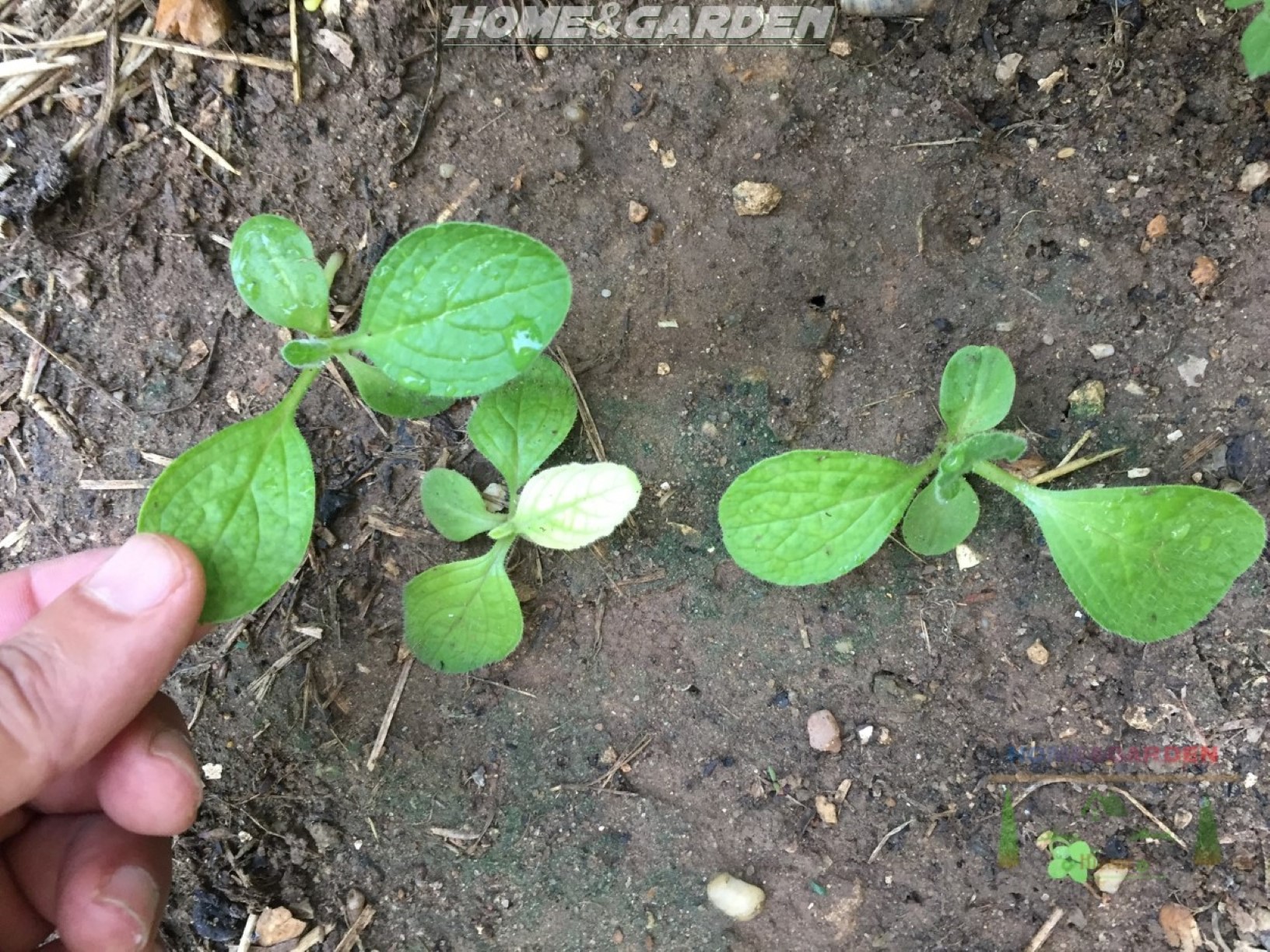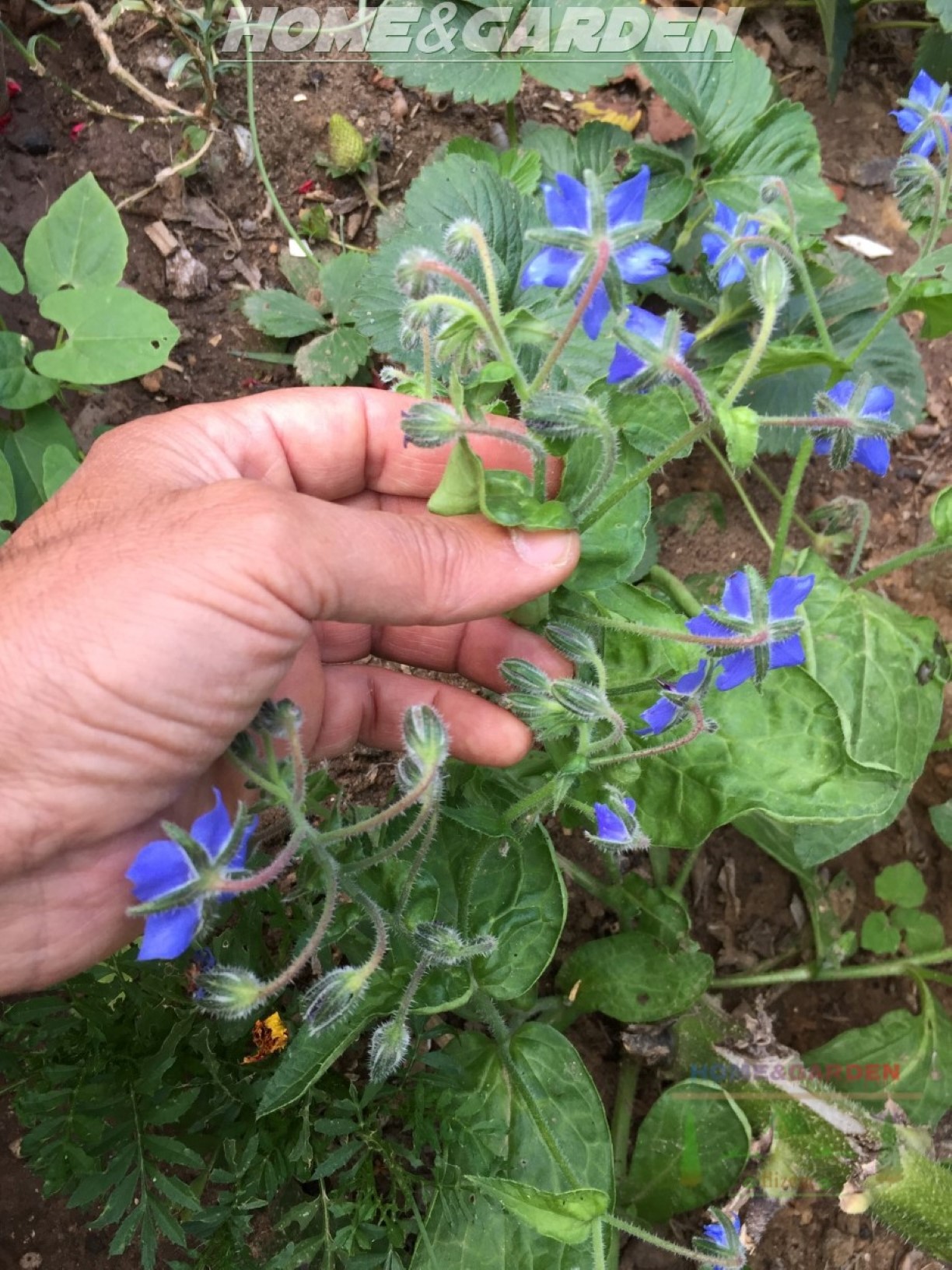How to Grow Borage
You need to know before you get started that once you plant borage in your garden, you will have it forever. This annual plant will self-seed itself and pop up every year in your garden. I don't consider borage invasive because it's far too beneficial to become problematic, and the best of all is that when a plant pops up that you don’t want it, it’s simple to pull and either eat or add to your compost pile. That's why I think borage is a must-have plant in our gardens.
Borage is an annual herb that prefers warmer seasons. You have to wait to sow your Borage seeds after the last frost, the soil should be warm enough!
- Borage is an adaptable plant that thrives in any soil, requires low to moderate moisture, and can withstand drought conditions.
- Borage can grow in partial shade, but it prefers the sunlight, so choose an area in your garden that gets full sun, at least part of the day.
- Sow seed directly into the soil in a sunny position.
- Water well and expect to see seedlings emerge in 5–10 days.
- When the seedlings reach a height of 2 inches tall, thin back to 1 seedling every 15 inches, as borage occupies a lot of room once it matures. Thinning borage seedlings will help them become further established and have plenty of room to avoid competing with each other for water, sun, and nutrients.
- Borage seedlings will survive light frosts. They don't need much care. You can add mulch around them to help the soil retain water to prevent plants from wilting.
Borage Plant Care
- Borage is a low-maintenance plant that doesn't require much care. You have to water and thin seedlings regularly until the plants reach maturity.
- Borage can bloom from late spring through summer. Staggering your planting times will give you a longer period of bloom and provide a longer harvest time.
- Borage plant can be pinched or pruned, to encourage branching and to keep them shorter.
- Borage will bloom for many weeks if the older flowers are trimmed off.
- If you want to prevent borage from self-seeding in the garden, Just pick its blue flowers regularly before they are able to set seed.
When the plant starts flowering, you can harvest frequently to encourage more bloom-production. The leaves and the flowers of borage are edible, with a flavor like a cucumber. As, the stalks and leaves are covered with fine, silvery hairs that tend to get pricklier as they mature. It’s wise to handle the plant with gloves while picking borage leaves. When picking borage leaves, select the young ones, which will have less of the little hairs. Just take scissors and snip right below a cluster of blossoms.
Your borage plant will continue to produce side-shoots with more buds and flowers. Continual harvesting and deadheading will allow for a longer period of use.
Borage seeds are easy to find, but they need to be picked at the right time when they are ripe. Collecting these seeds is a little tricky. When the plant has yellowed and matured, whereas the cluster still has flowers on it. You have to collect the seeds as soon as the flowers fade, because borage seeds drop soon after.
Borage plant grows quickly, blooms almost continuously, and then in the end, will flop over and must be pulled. It’s an easy plant to pull. As borage is a big plant, you can lay it in the path of your garden where it can decompose slowly, and add organic matter to your soil, or you can toss it in the compost. You will improve your garden soil.
Now that you know to grow Borage, you can give it a try and add this powerful herb to your garden to enjoy all its benefits!
Borage seeds are easy to find, but they need to be picked at the right time when they are ripe. Collecting these seeds is a little tricky. When the plant has yellowed and matured, whereas the cluster still has flowers on it. You have to collect the seeds as soon as the flowers fade, because borage seeds drop soon after.
Companion Planting With Borage
Borage plant is said to repel tomato worms and cabbage worms and this plant with its attractive blue flowers attracts beneficial insects, such as bees, that we need as a great plant pollinators. Borage will attract these beneficial insects to your garden and benefit other plants, such as cucumber, zucchini and strawberries, that do require insect pollinators. Not only borage is beneficial to bees, but can improve the quality of other plants, as beans, squash and peas. If it's grown in conjunction with them.
Borage Plant Disease
Borage is relatively resistant to pests and diseases. But, it still can be attacked by some that will render your plants sick and useless.
Powdery mildew is possibly the most common disease to disrupt your plant growth. It causes white spots on the leaves, and if left untreated, will begin to grow black mold spores. To prevent this disease, give your plants good air circulation and remove infected leaves to reduce the spread. Make sure your plants get plenty of sunlight and not over-watered. Always remember you have to water the soil, never the leaves and the flowers, water in the morning so the sun can dry them through the day.
The Benefits of Borage
Borage has attractive green foliage, lovely star-shaped blue flowers and woolly stems. In the garden, This beautiful plant attracts bees of all kinds. The benefits of borage are so many from repelling pests such as hornworms, attracting pollinators, until aiding any plants it is interplanted with, by increasing resistance to pests and disease. Borage has a reputation for improving the flavor and growth of strawberries.
Borage plant grows quickly, blooms almost continuously, and then in the end, will flop over and must be pulled. It’s an easy plant to pull. As borage is a big plant, you can lay it in the path of your garden where it can decompose slowly, and add organic matter to your soil, or you can toss it in the compost. You will improve your garden soil.
Watch Amazing Benefits Borage Plant Video
You want to read More:
➡️ Borage Seeds
This web site is a participant in the Amazon Services LLC Associates Program, an affiliate advertising program designed to provide a means for sites to earn advertising fees by advertising and linking to amazon. Some of the links to products on this site are affiliate links. These are products that i've used or recommend based from homesteading experience. I do make a small commission (at no extra cost to you) from these sales.(alert-warning)


















